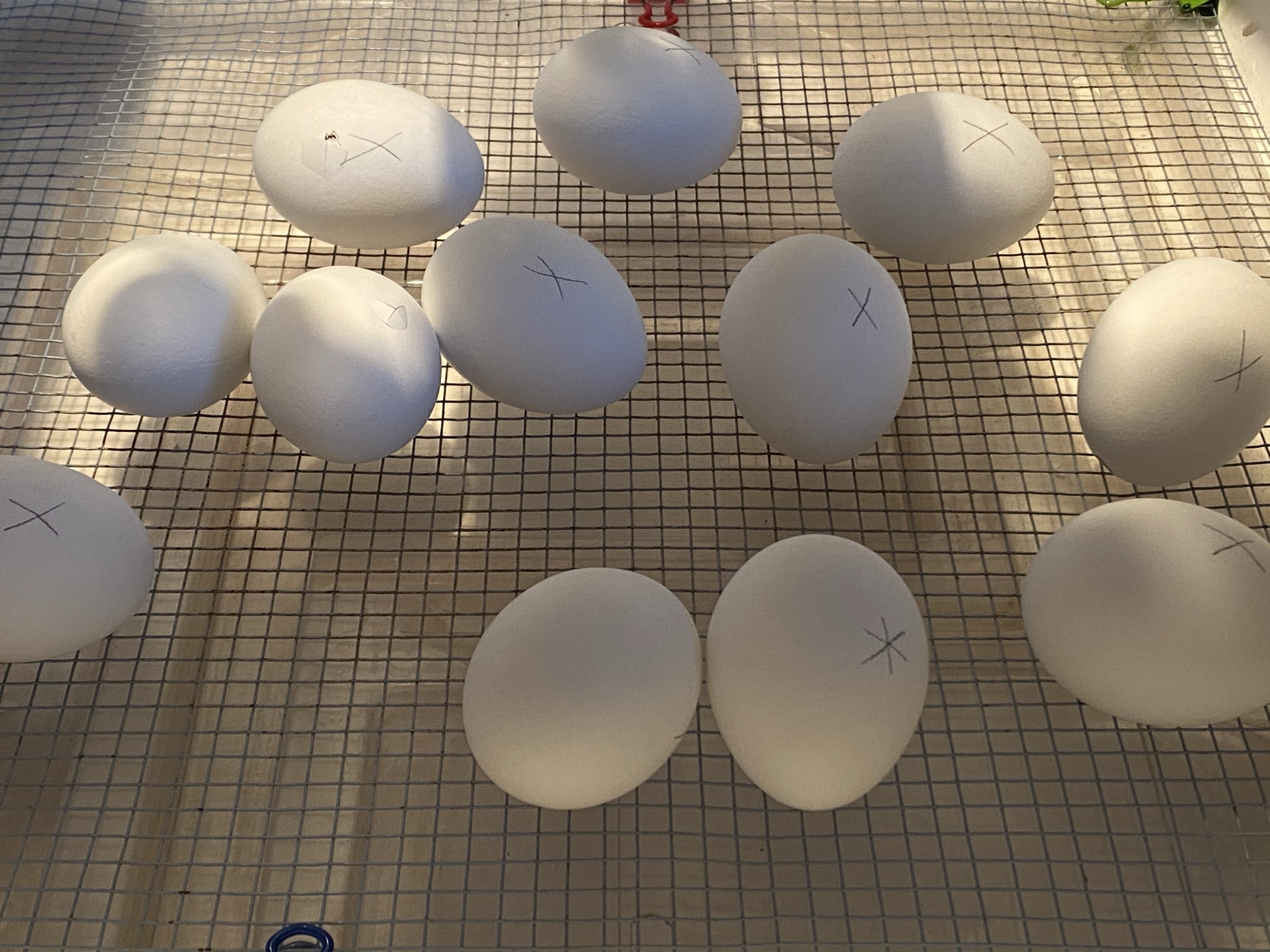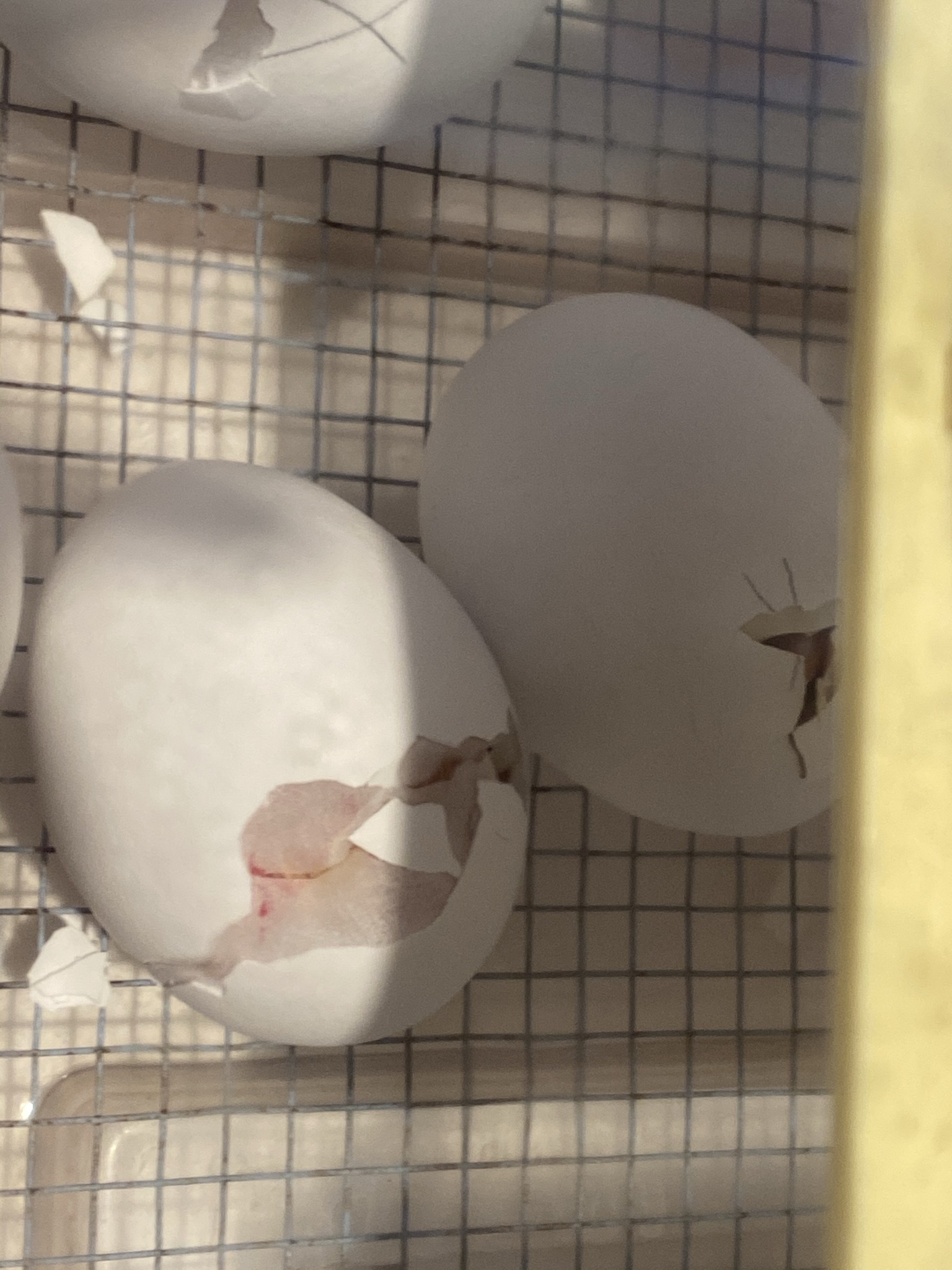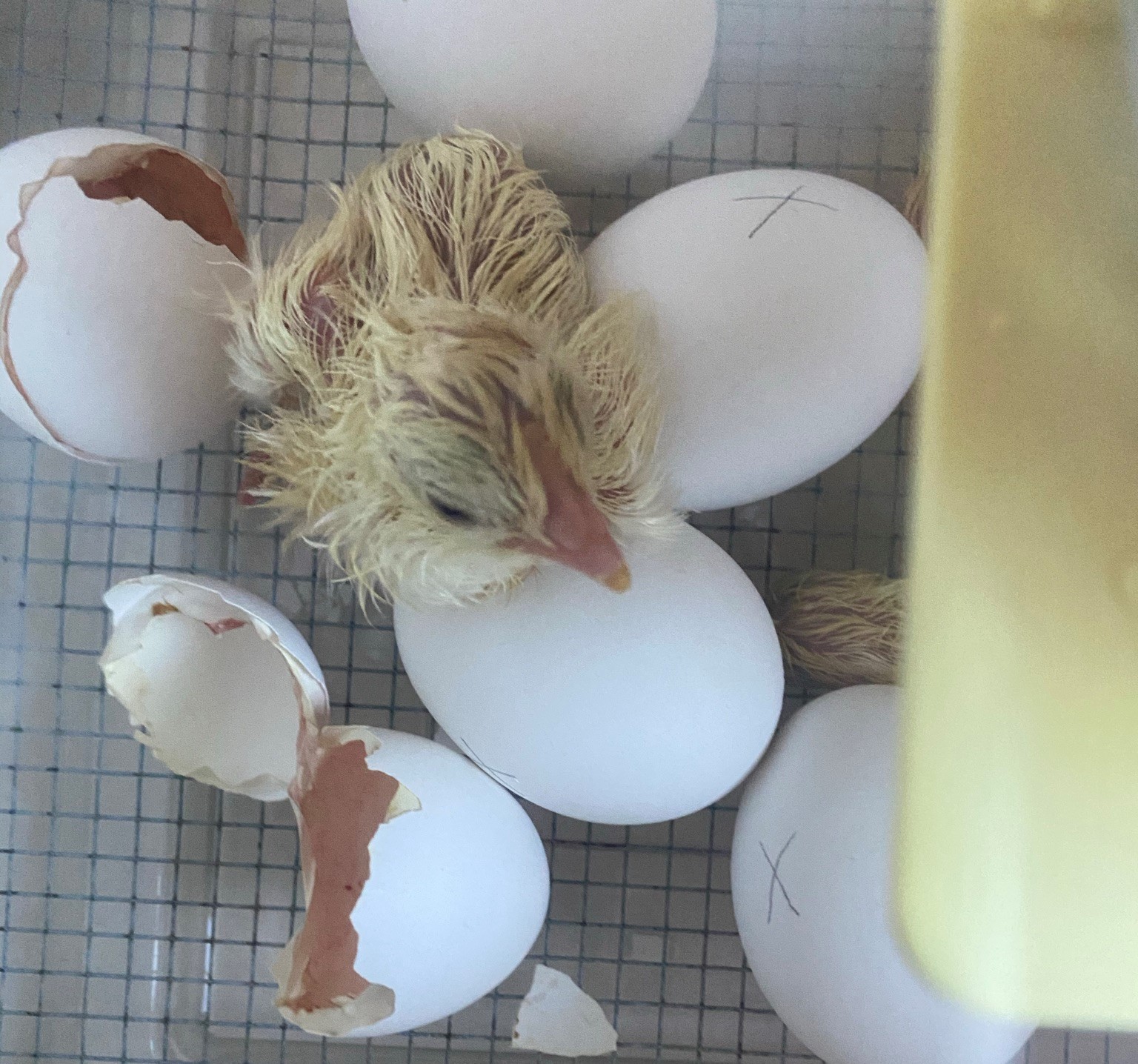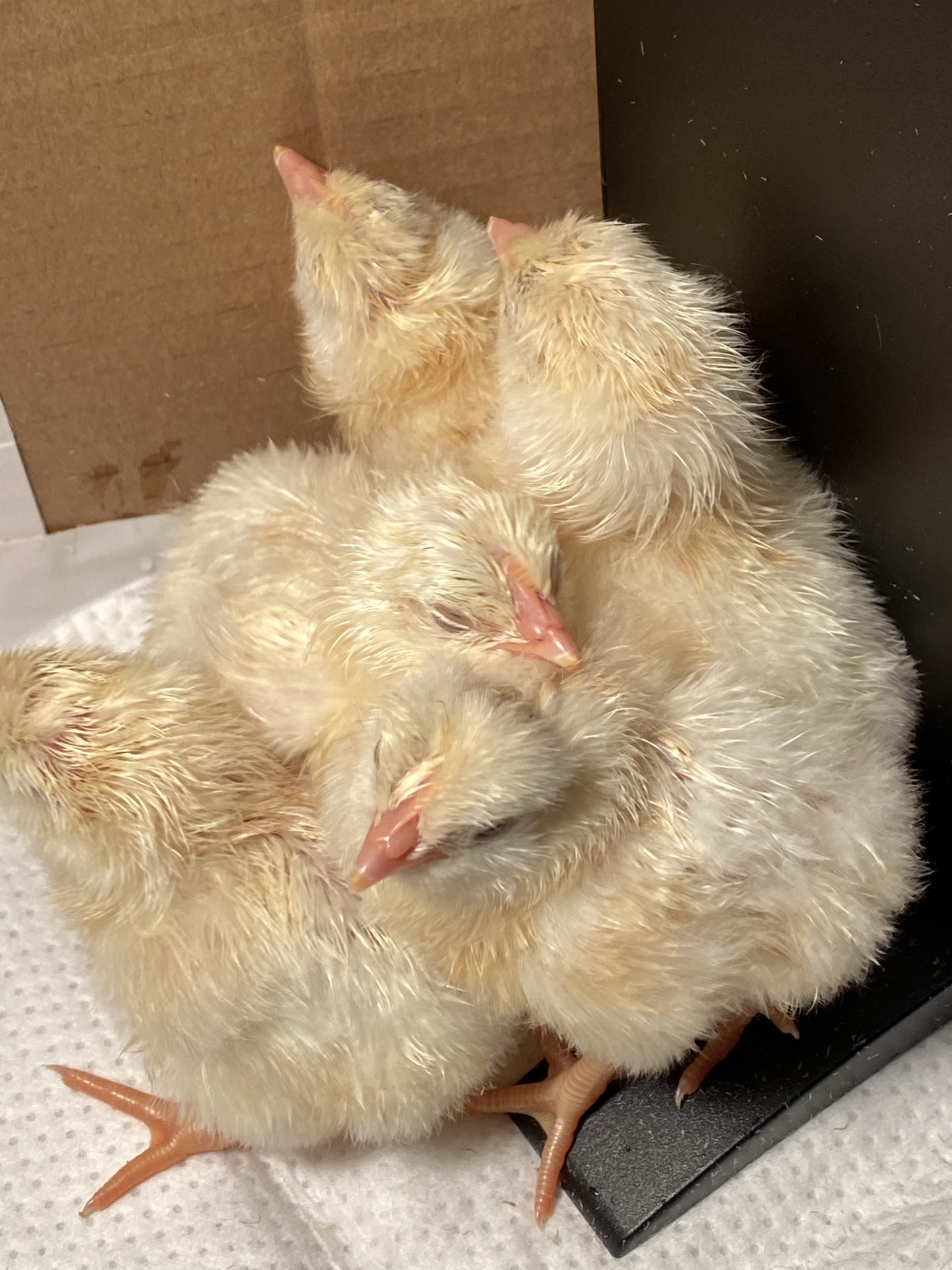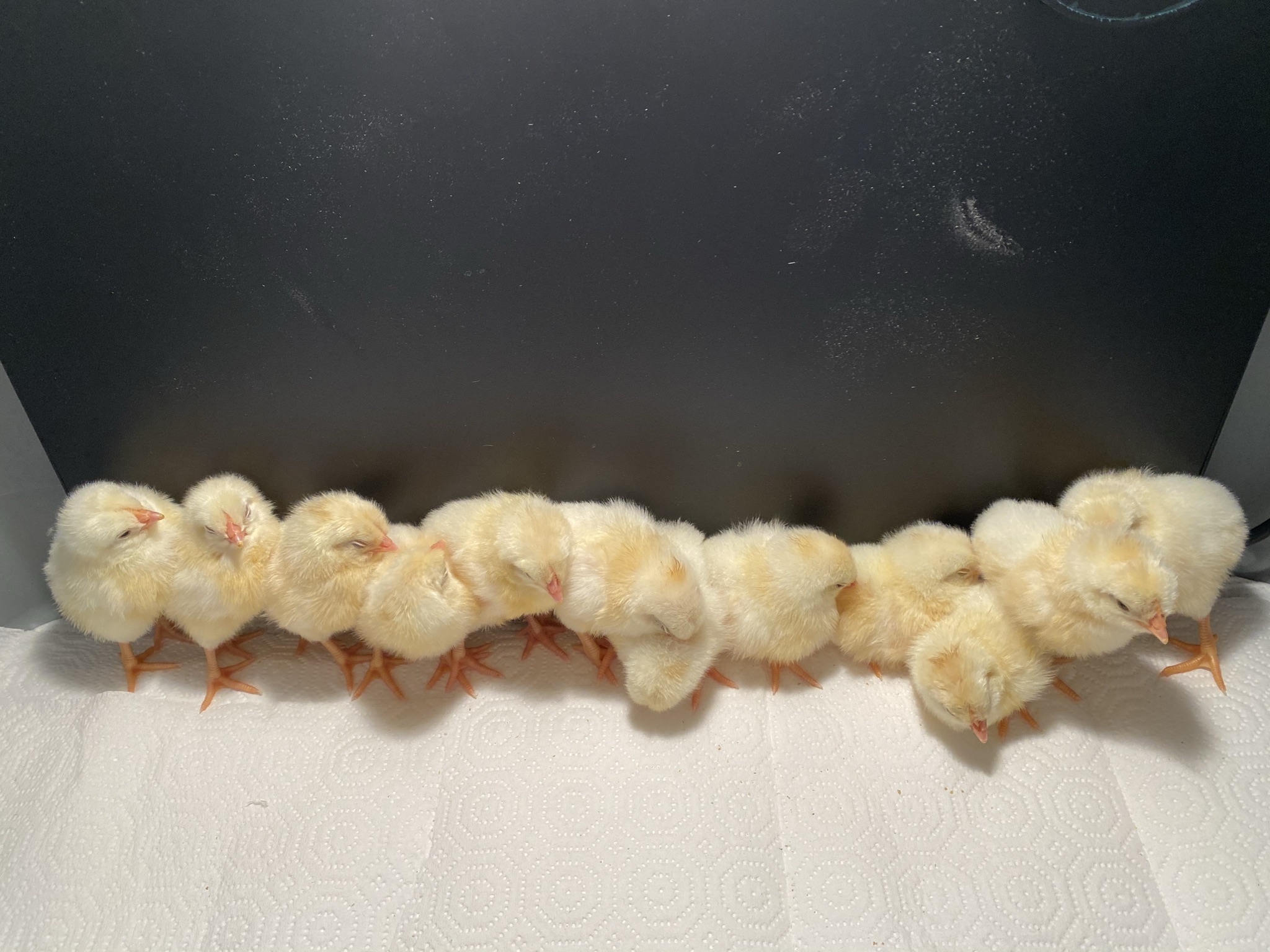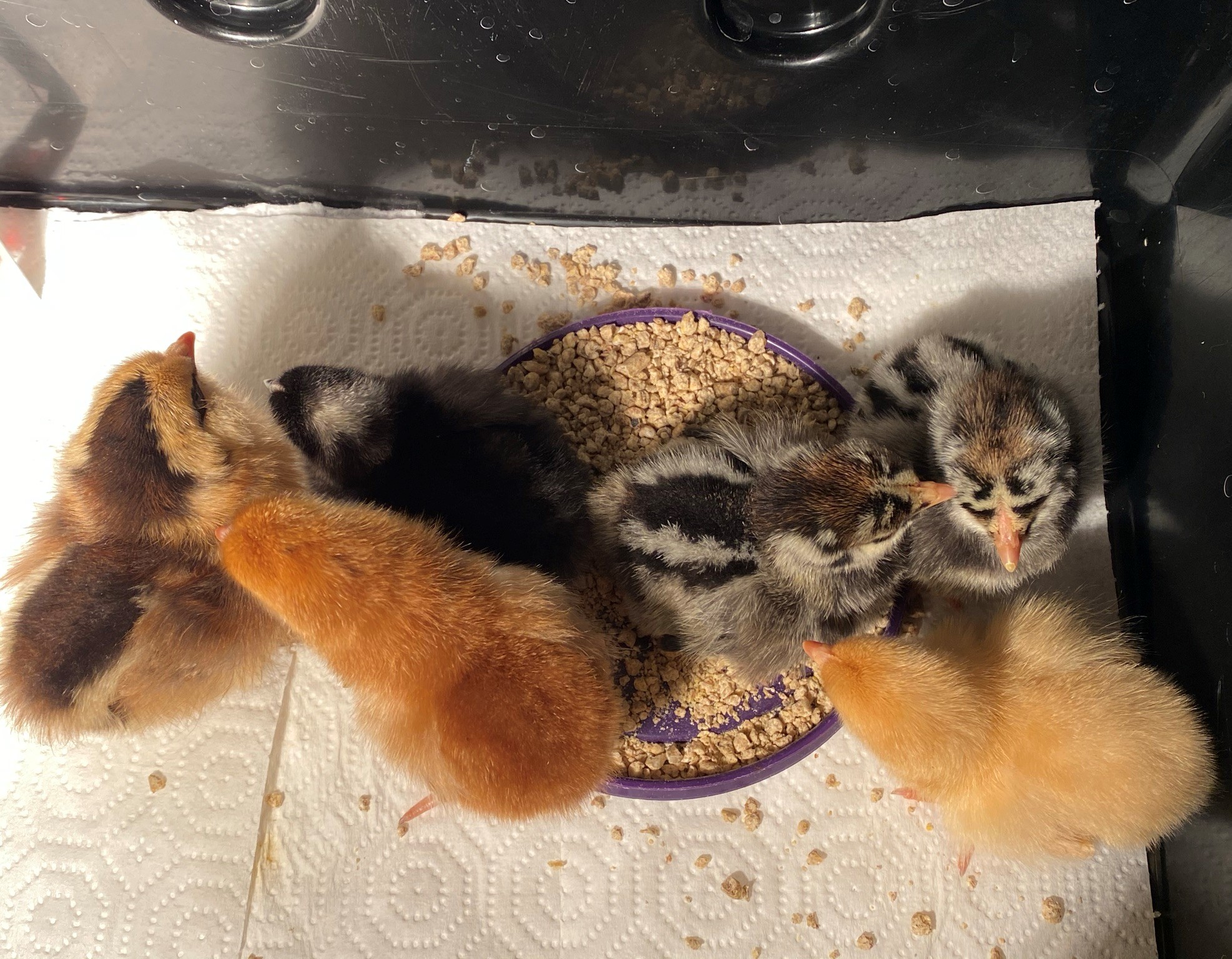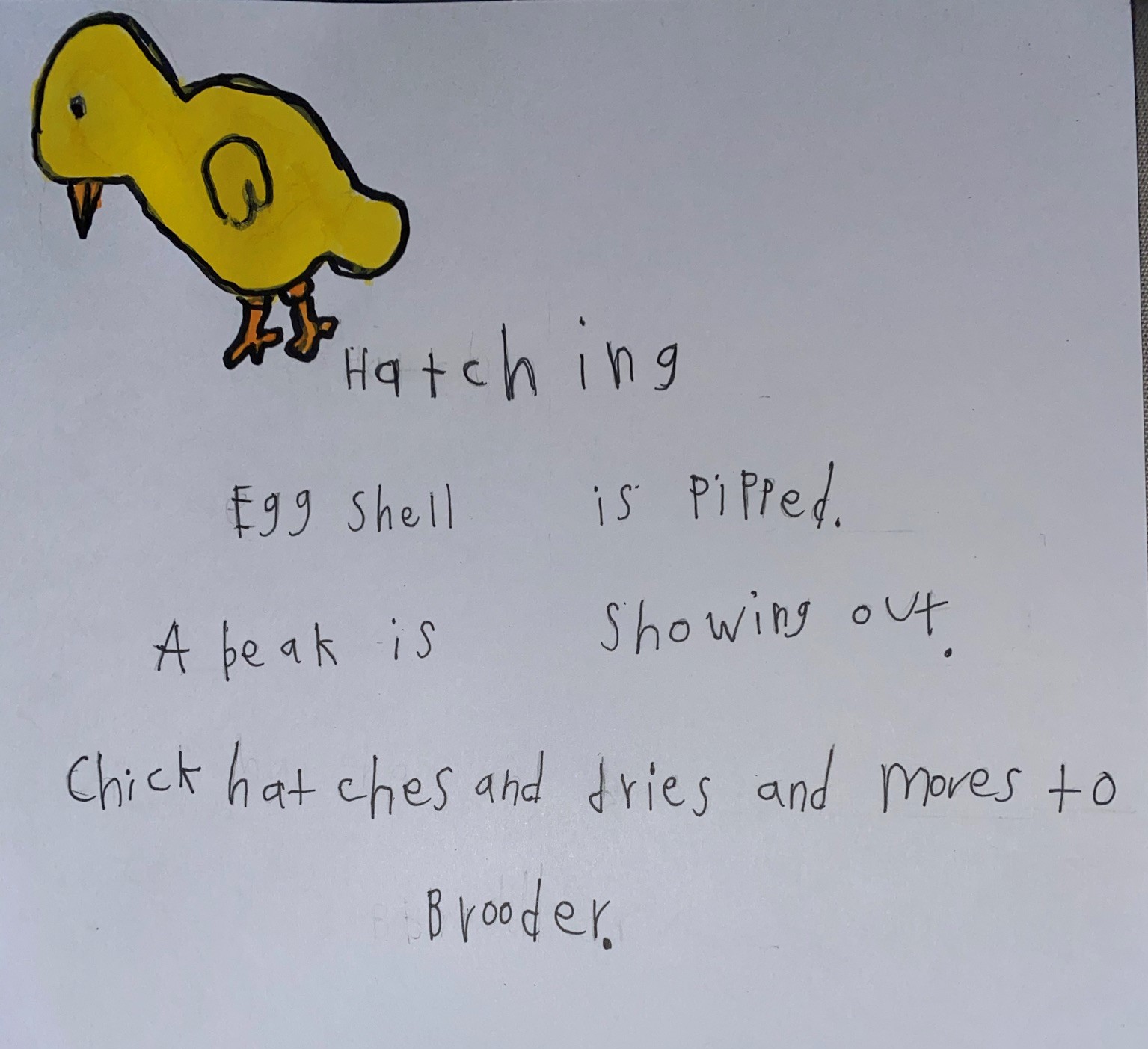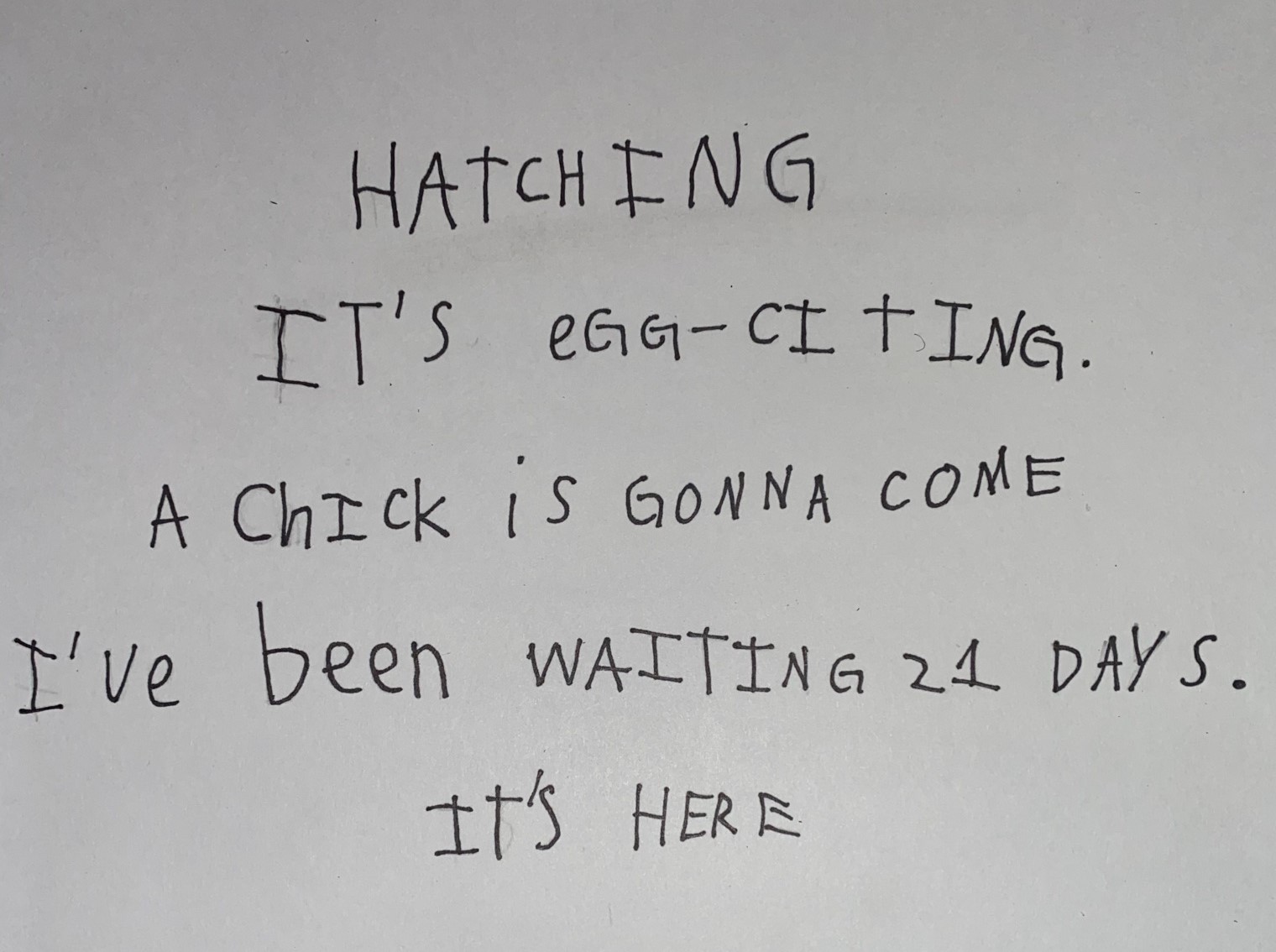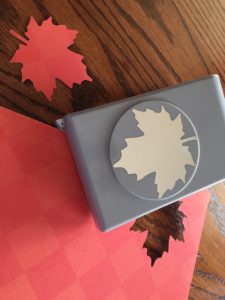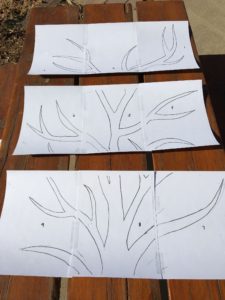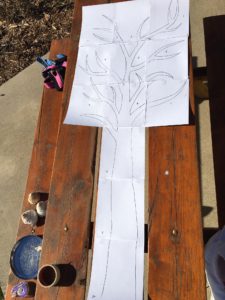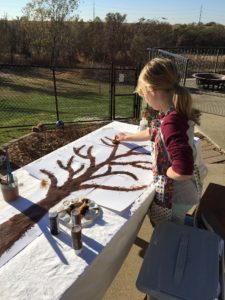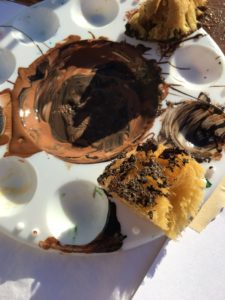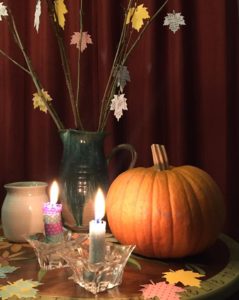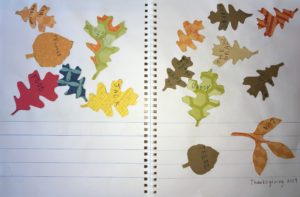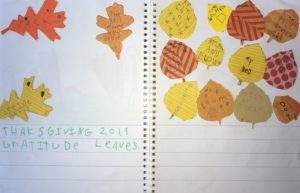My nine-year-old daughter has an amazing gift and love for endlessly asking questions. What is your favorite color? Favorite day of the week? Favorite animal? Favorite number? She recently asked me what my favorite month was, and after giving it some thought I settled on November. There are so many things I love about November. November is strikingly beautiful! I love the cool fall weather and change of the season, the cozy nights by the fire with a cup of tea and a good book, the brightly colored trees, and the crunch of leaves below my feet. What I love best though is the celebration of thankfulness. As we journey from a celebration of darkness in October, to a celebration of gratitude in November, November seems to shine even brighter. Perhaps the contrast makes the latter more stunning; perhaps the latter simply is more stunning.
As the cold November wind blows the final leaves from the trees, the absence of the leaves allows us to see beyond, to what we couldn’t see before, and our vision becomes enhanced. Similarly, the November wind of thankfulness gusts through our lives, and enhances our vision. Gratitude by nature enhances vision by adjusting focus. I have heard it said many times, “What we focus on, we magnify”. November blesses us with the opportunity to focus on, and therefore, to magnify gratitude.
Oh, magnify the Lord with me, and let us exalt His name together. (Ps 34:3, NKJV)
When we gratefully acknowledge the visible everyday gifts, we open our eyes to God’s goodness in our lives. A posture of gratitude allows us to “see the visible, which makes us understand the invisible” (Rom 1:20). Thanksgiving, by definition, is grateful acknowledgment of benefits or favors, especially to God (www.dictionary.com). Thanksgiving begins with acknowledgement. In order to understand this fully, we have to understand an important truth. Everything we have is from God (Ps. 24:1). We cannot acknowledge the Giver if we do not know the source.
The earth belongs to the Lord. And so does everything in it. The world belongs to him. And so do all those who live in it. (Ps 24:1, NIRV)
Opposition to truth cannot be excused on the basis of ignorance, because from the creation of the world, the invisible qualities of God’s nature have been made visible, such as his eternal power and transcendence. He has made his wonderful attributes easily perceived, for seeing the visible makes us understand the invisible. So then, this leaves everyone without excuse. (Rom 1:20, TPT)
In a world of entitlement, I think we would all agree that there is space for more gratitude. Two day shipping, 1-click shopping, pressure cooked meals, high speed internet, instant text messaging, and movies on demand, all reinforce a message that we are entitled to what we want, when we want it. We are blessed to live in a time such as this, but we must pair these benefits and privileges with the wisdom gratitude imparts. Gratitude shifts our focus by allowing us to first acknowledge the gift, and in turn, express our appreciation to the Giver. By better understanding the definitions of these terms it will help us to define the solution.
Entitled: having a right to certain benefits or privileges (Merriam-Webster); real or perceived.
Grateful: to be appreciative of benefits received (Merriam-Webster).
Thanksgiving: grateful acknowledgment of benefits or favors, especially to God (www.dictionary.com).
Entitlement is simply a right to certain benefits, whereas gratitude is an appreciation of those benefits. Entitlement and gratitude are designed to go hand-in-hand, which is the nature of thanksgiving – the act of acknowledging our benefits and favors with gratitude, especially to God.
“I hope my child grows up to be entitled,” said no mom ever! As parents, if there is one thing we would all agree on, I believe, it is that we want to raise grateful children. In a world where there is so much division, gratitude is a common denominator that unites us. Raising grateful children may feel like a daunting task, but be encouraged, we can! We become transformed by the renewing of our mind. How do we renew our minds – we can begin with a focus on thanksgiving.
And do not be conformed to this world, but be transformed by the renewing of your mind, so that you may prove what the will of God is, that which is good and acceptable and perfect. (Rom 12:2, NASB)
Entitlement alone is not the problem plaguing our nation, but rather, entitlement paired with the absence of appreciation and gratitude. There are many things we are entitled to. Simply by being born in America we are entitled to freedom to worship as we wish, the right to vote, the right to choose how we educate our children (public, private, homeschool), “life, liberty, and the pursuit of happiness”… The list of our privileges in America is extensive. That truth alone should make us grateful.
Even greater than any privilege we may be entitled to on this earth, are the unlimited privileges and benefits of being children of God. We are abundantly entitled! The world seems to consistently get the right message with the wrong interpretation. We got the message that we are entitled – we just misinterpreted it. To see how we missed the mark on COVID click here. We are entitled to a Kingdom full of blessings because of a Savior who adores us! How do we tap into the truth of entitlement? Gratitude. How do we do it? We shout for joy to Lord, and we enter His gates with Thanksgiving (Ps 100)!
Psalm 100
A psalm. For giving grateful praise.
1 Shout for joy to the Lord, all the earth.
2 Worship the Lord with gladness; come before him with joyful songs.
3 Know that the Lord is God. It is he who made us, and we are his;
we are his people, the sheep of his pasture.
4 Enter his gates with thanksgiving
and his courts with praise;
give thanks to him and praise his name.
5 For the Lord is good and his love endures forever;
his faithfulness continues through all generations.
Everything we have, that is good, is from God (Jm 1:17). When God opens His generous hand, it is full of blessings, satisfying the longings of every living thing (Ps 145:16). God loves us so much that he calls us His children, and as His children, we are heirs to His promises (1 John 3:1, Gal 3:29).
Every good and perfect gift is from above, coming down from the Father of the heavenly lights, who does not change like shifting shadows. (James 1:17, NIV)
When you open your generous hand, it’s full of blessings, satisfying the longings of every living thing. (Ps 145:16, TPT)
Look with wonder at the depth of the Father’s marvelous love that he has lavished on us! He has called us and made us his very own beloved children. (1 John 3:1, TPT)
And now that you belong to Christ, you are the true children of Abraham. You are his heirs, and God’s promise to Abraham belongs to you. (Gal 3:29, NLT)
Let’s ponder the thought that perhaps we do want to raise entitled children, entitled children who are equipped with the wisdom gratitude imparts. We are raising children of God who are entitled to all the blessings of the Kingdom. That’s a big darn deal y’all! Our goal should be to raise children who know who they are, who their Father is, and how much He loves them. Gratitude imparts wisdom. By acknowledging and appreciating our gifts and knowing their true source, the atmosphere in our homes will shift.
The bondage of entitlement comes from the absence of gratitude. As gratitude increases, the bondage to entitlement decreases. The result… thanksgiving!

I recently heard it said, “The best time to plant a tree was twenty years ago, the next best time is now”. This really spoke to my heart because our family just moved to a new property, and we inherited very few established trees. We can’t help but question why the people before us didn’t plant any trees when they moved in 15 years ago?! I get it, starting with little saplings feels like such a long-term investment, and may often feel like it is hardly worth the effort, especially if your residence is temporary. But the truth is, if we don’t plant them today, we will never have trees. We can dwell on the time we missed, or embrace the opportunity today! So today… we are planting trees!
One of the trees we have chosen to plant it an oak tree. Much to my surprise, even tree enthusiasts have tried to sway us away from the long term investment of the slow growing oak, particularly if we are uncertain if we will be in this house forever. If we approach life with this philosophy… we are missing the mark on our purpose here. We are here on this earth for only a short while, this is our temporary residence. We must embrace an eternal perspective when choosing what seeds to plant and water. While we are here, we are called to create beauty and to leave a lasting mark for future generations. Your temporary impact has eternal rewards! Plant the oak tree!
As with trees, the best time to teach children about gratitude is today. Don’t dwell over missed opportunities. Yes, we could have started 5 years ago, but the next best time is now. There are ways you reinforce gratitude daily with your children, you know what they are. You are doing a good job. That little sapling is growing up to be a mighty oak. Just stick with it. Instilling gratitude in children is indeed a long-term commitment with eternal rewards!
My hope is to both encourage you and equip you with practical tools you can use in your home during this season of Thanksgiving and throughout the year. Join me in focusing on and magnify thanksgiving in our homes!
Rejoice always, pray continually, give thanks in all circumstances; for this is God’s will for you in Christ Jesus. (1 Thess 5:16-18)
What you can do (open links for attached lessons)
- Memorize Psalm 100. This is a beautiful Psalm you can spend the month of November focusing on with your family. Our family loves this song version of this Psalm.
- Gratitude leaves
- Gratitude Journals
- Meal Time Praises and Prayers – This is a family tradition of ours, and is basically what it sounds like… During our dinner prayer we have each person say a praise and a prayer as we go around the table. It creates a daily environment of thanksgiving in our home, and also teaches little ones how to pray.
- Other gratitude resources:
- Not Consumed
- ABC Jesus Loves Me (for younger children)


